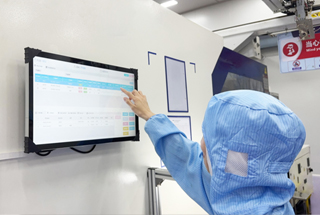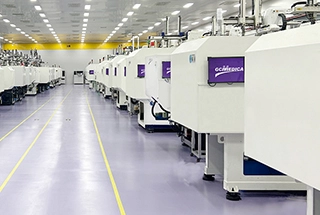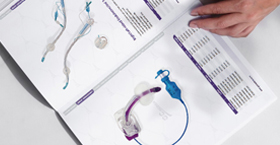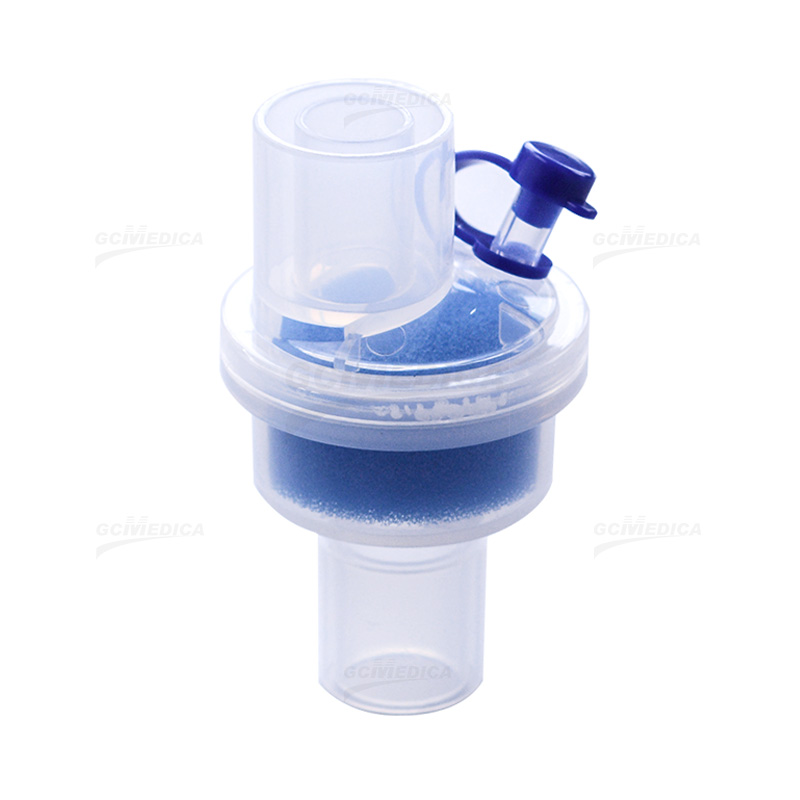Breathing system filters (BSFs) and heat–moisture exchangers (HMEs) both serve critical roles in respiratory circuits by providing microbial protection and, in the case of HMEs, passive humidification. Understanding their distinct functions, advantages, and limitations helps clinicians choose the right device for ventilation, anesthesia, or transport scenarios.
Breathing System Filters (BSFs)
BSFs are designed primarily to prevent cross‑contamination between the patient and the ventilator or anesthesia machine. They utilize mechanical (pleated paper) or electrostatic filter media to trap bacteria, viruses, and particulates with efficiencies often ≥ 99.9 %. BSFs do not significantly alter gas humidity or temperature; their internal volume and resistance are optimized to minimize added work of breathing. Because they do not absorb moisture, BSFs remain effective over longer periods in moist environments, making them well suited for extended use or circuits with active humidification.
Heat–Moisture Exchangers (HMEs)
HMEs combine a hygroscopic or hydrophobic matrix with filter media to conserve exhaled heat and humidity while also providing microbial filtration (≥ 99.9 % efficiency). By capturing moisture from exhaled gas and returning it during inspiration, HMEs help maintain mucosal integrity, reduce airway irritation, and prevent thick secretions. However, their moisture‑absorbent core eventually saturates, increasing resistance and necessitating replacement—typically every 24–72 hours depending on secretion load and ventilator settings.
Key Differences
Humidification: HMEs actively conserve and return moisture; BSFs do not affect humidity.
Dead Space: HMEs add more dead space (30–80 mL) compared to BSFs (10–30 mL), which can be critical in low‑tidal‑volume ventilation.
Resistance: Both devices introduce some resistance, but saturated HMEs can significantly increase inspiratory pressures over time. BSFs maintain more stable resistance.
Use Duration: BSFs can often remain in place for 5–7 days if dry, whereas HMEs must be changed when moisture saturation occurs.
Applications: BSFs are preferred when active humidification is in use or humidity control is not required. HMEs are favored in short‑term ventilation, field anesthesia, and patient transport where active systems are unavailable.
Below is a comparative overview:
| Feature | Breathing System Filter (BSF) | Heat–Moisture Exchanger (HME) |
|---|---|---|
| Primary Function | Microbial filtration | Microbial filtration + passive humidification |
| Filtration Efficiency | ≥ 99.9 % | ≥ 99.9 % |
| Humidification | None | 25–32 mg H₂O/L |
| Dead Space | 10–30 mL | 30–80 mL |
| Airflow Resistance | 1.0–2.0 cm H₂O/L/s | 1.5–3.0 cm H₂O/L/s (increases when saturated) |
| Use Duration | Up to 5–7 days (if dry) | 24–72 hours (depending on secretion load) |
| Ideal Applications | Long‑term ventilation with active humidification; anesthesia circuits where humidity managed separately | Short‑term ventilation; transport; field anesthesia; tracheostomy care without active humidifier |
| Cost Consideration | Generally lower per unit, longer usage time | Slightly higher per unit, replaced more frequently |
Clinical Selection Tips
Use BSFs when an active heated humidifier is in place or when minimal dead space is critical (e.g., neonates, low tidal volumes).
Opt for HMEs in situations lacking power or water for active humidification, such as transport, emergency field anesthesia, or brief operative cases.
Monitor airway pressures and moisture accumulation: if resistance spikes or moisture beads are excessive, replace the HME promptly to maintain patient comfort and safety.
Related products
| Heat Moisture Exchange (HME) > | |
| Eco-mini HME > |


 Français
Français Español
Español Products
Products

 About Us
About Us













